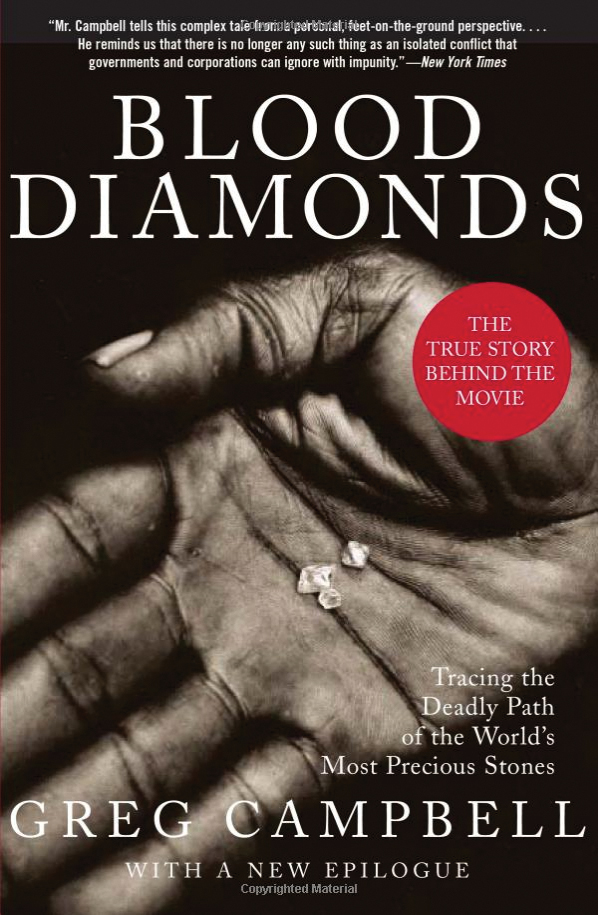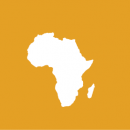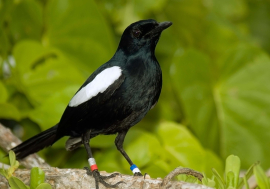Africa Books
Book review
Blood Diamonds: Tracing the Deadly Path of the World’s Most Precious Stones
by Greg Campbell
Basic Books, New York, NY, USA, 2002; 280 pp; pb $16.99

Diamonds are regarded as one of the most important symbols of love in many cultures around the world. The glittering stone exudes status, luxury and class. What is less known to many consumers of the precious gem, however, is its role in the brutal war that raged (and still continues in some parts of Africa, like the Democratic Republic of the Congo) in diamond-rich Sierra Leone from 1991 until 2002, when the war officially ended.
In his book, award-winning journalist Greg Campbell explores the role of diamonds during Sierra Leone’s civil war and how the big names in the industry, such as the South African corporation De Beers, allegedly looked the other way when gruesome acts of war were being committed by rebels using diamond profits to purchase weapons. In fact, Campbell accuses De Beers of manipulating the supply of and demand for diamonds during that period to boost profits.
Diamonds were first discovered in Sierra Leone’s forests almost a century ago. When civil war broke out in 1991, Campbell writes, rebels smuggled and sold diamonds at premium prices to dealers in the West.
Perhaps one of the important contributions of the book is that the author gives a human face to those who suffered in the diamond trade – Sierra Leoneans who were denied diamond proceeds and artisanal diamond miners who were often conscripted and sometimes later raped or killed by the rebel army, the Revolutionary United Front (RUF).
Readers of this book might come away with the impression that the issue is overanalysed; however, it is time to get past the sparkle and glitter and reconsider the real value and meaning behind diamonds given the human suffering they have caused in conflict countries. Campbell’s compelling 252-page book offers invaluable insights into global corporations’ greed and manipulation of the diamond market, as well as the incredibly high human cost of the diamond trade.
— Pavithra Rao
After Freedom: The Rise of the Post-Apartheid Generation in Democratic South Africa by Katherine S. Newman and Ariane De Lannoy (Beacon Press, Boston, USA, 2014; 296pp; hb $35)
Biotechnology in Africa: Emergence, Initiatives and Future (Science Policy Reports) by Florence Wambugu and Daniel Kamanga (Springer Publications, New York, USA, 2014; 380 pp; hb $179)
Climate Change Cooperation in Southern Africa by Ian Rowlands (Routledge, New York, USA, 2014; 186 pp; pb $36.84)
Combating Corruption: Legal Approaches to Supporting Good Governance and Integrity in Africa by John Hatchard (Edward Elgar Publications, Camberley, UK, 2014; 400 pp; hb $145)
Governance for Justice and Environmental Sustainability: Lessons across Natural Resource Sectors in Sub-Saharan Africa by Merle Sowman and Rachel Wynberg (Routledge, New York, USA, 2014; 384 pp; hb $145)
Half A Piece of Cloth: The Courage of Africa’s Countless Widows by Jane L. Crane (Hearkening Press, Rancho Santa Fe, USA, 2014; 268 pp; pb $18.99)
Immigrant Exclusion and Insecurity in Africa: Coethnic Strangers by Claire L. Adida (Cambridge University Press, New York, USA, 2014; 184 pp; hb $84)
Modernization as Spectacle in Africa by Peter J. Bloom, Stephan F. Miescher and Takyiwaa Manuh (Indiana University Press, Bloomington, USA, 2014; 378 pp; hb $85)
Outsmarting Apartheid: An Oral History of South Africa’s Cultural and Educational Exchange With the United States, 1960-1999 by Daniel Whitman and Kari Jaksa (State University of New York Press, New York, USA, 2014; 444 pp; hb $105)




















